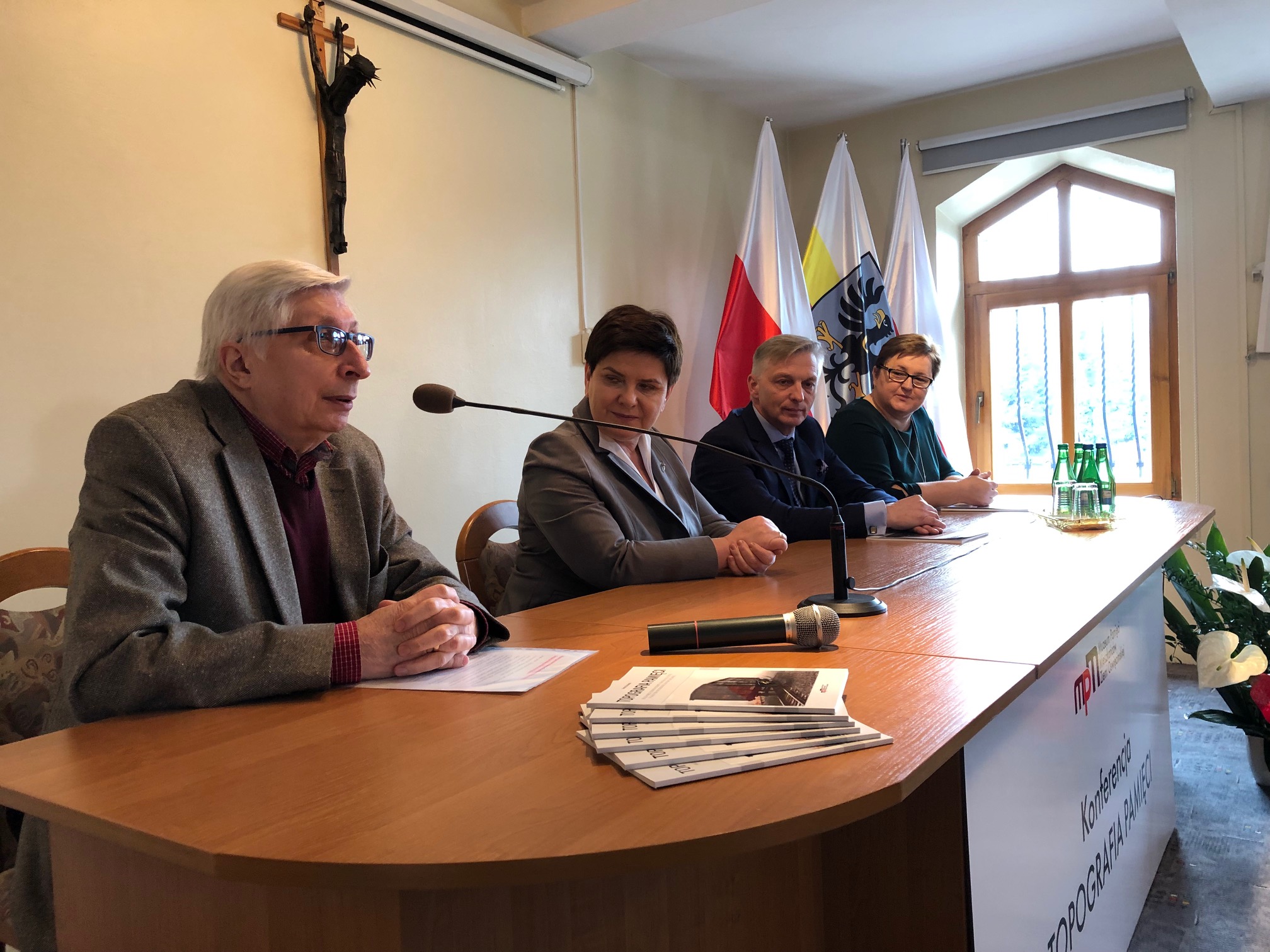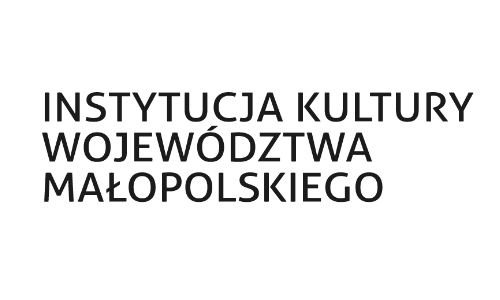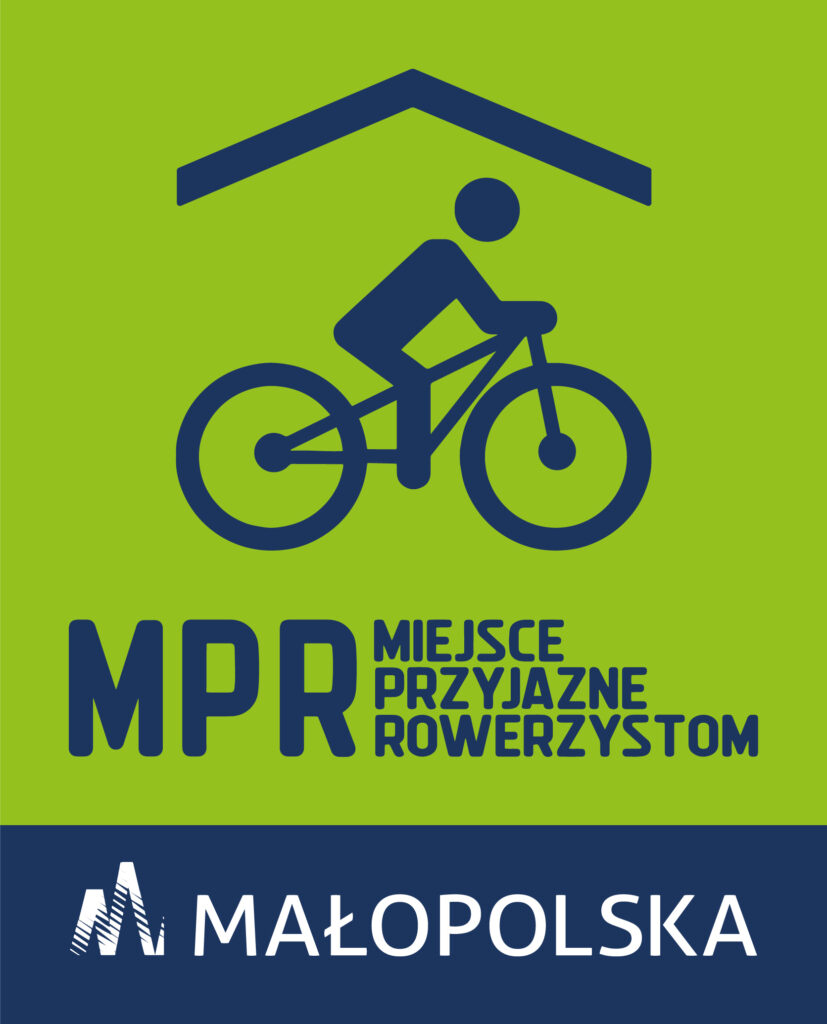With these words Deputy Prime Minister Beata Szydło, who had honorary patronage of the academic conference entitled “Topografia Pamięci,” concluded her speech. The conference was combined with the promotion of Dr Andrzej Strzelecki’s publication published by the Land of Oświęcim Residents’ Memory Museum. The gathering, on the 18th March 2019, was under the patronage of District Head Marcin Niedziela and was held in the Maximilian Kolbe Centre in Harmęże.
The gathering was opened by Museum Director Dorota Mleczko who emphasised that this was a very important day for the Museum.
“For the first time, we can present the idea and premise of our Museum – namely, to remember the history of the inhabitants of the land of Oświęcim to a wider audience. In addition, we have the opportunity to present a new cultural entity which has begun its activity here in this area,” said the Museum Director. As Dorota Mleczko highlighted, the Museum is a new institution, which is just beginning its activity. Nonetheless, it has been shown much good will by the residents, who have very enthusiastically engaged in the creation of the Museum’s collection.
“Local land of Oświęcim residents are not only opening the doors of their homes to us, but also their hearts. Often with great emotion, they share the stories of the fates of the families with us, families who found themselves living in the brutal years of World War II. The trust we are shown is also tangible – with increasing frequency we are given documents, letters, photographs and personal keep-sakes/ mementos, all of which enable us to build the Museum’s collection and the donors – residents of the land of Oświęcim to become co-creators of the Museum – for this we are very grateful,” said Museum Director during the event. Dr Andrzej Strzelecki’s book entitled Topografia Pamięci. Miejsca pamięci o ofiarach Auschwitz i bohaterach ruchu oporu w latach 1939-1945 znajdujące się na Ziemi Oświęcimskiej (Topography of Memory. Memorial sites in the land of Oświęcim of Auschwitz victims and heroes of the Resistance Movement in the years 1939 – 1945) is above all a didactic resource. It is an educational publication for young people and for all those who visit the local area, which aims to remember those people who are very often forgotten today and whose heroic efforts are known only to closest friends and family.
As District Head Marcin Niedziela noted, alongside the history of the collective suffering of mass murder as shown/ told in the Auschwitz-Birkenau State Museum, there is an equally important, yet to date poorly presented history of the residents of the land of Oświęcim who tried to help save the lives of Auschwitz-Birkenau prisoners.
“For us as the supervisory body, it is an honour, but also a responsibility regarding the hope that has been put in us. The Museum is currently in the organisational as well as design phase, but is developing quickly, as proved by the documents, photographs and other mementos which are constantly been given to us by witnesses of historical events. The Museum is also developing in the field of education, to which today’s conference dedicated to the publication “Topografia Pamięci” witnesses. All of activities are the result of very hard work and I hope that soon, something I wish for all the local residents, we will be able to invite you all to visit the new Museum,” District Head Niedziela addressed the audience.
In turn, Deputy Prime Minister Beata Szydło noted that the Museum will be an important place for discussion and raising issues regarding history and memory as well as about the land of Oświęcim and the whole region.
“I do not want the land of Oświęcim to be associated only with Auschwitz. Auschwitz is a separate story; it was a factory of death created here by the German occupants. I am from here, as are most of you, ladies and gentlemen, and my duty is to remember and honour those who lived, died and suffered here,” said Beata Szydło. The Deputy Prime Minister also emphasised that the Museum is not and will not be competition for the Auschwitz-Birkenau State Museum.
“The Auschwitz-Birkenau State Museum is and will be a custodian of memory of all those who died a martyr’s death and will always remind visitors of everything that took place during those terrible years. But I believe we are also obliged to honour our forefathers, those who are still living but will soon no longer be with us, those who remember those times… and show what kind of people they were,” Beata Szydło said and added, “The Museum is a good place to hold a discussion, to allow different and contrasting views to “rub up against” one another, to bring together various people interested in the world and history and it is also a good place for us to meet and create a space for future generations, in which our shared history will be told. It is my dream that visitors to the Auschwitz- Birkenau State Museum will also come to visit the Land of Oświęcim Residents’ Memory Museum and see this beautiful area, discover the history of our towns and villages, not only Oświęcim, but of all of the land of Oświęcim. I think that together we can achieve this. We are proud of our land. Let’s show what fantastic people lived and still live here! That is our task. This is a Museum about us – about the residents of the land of Oświęcim.”
Three lectures concerning the general political situation of those past times and local history were given during the conference. Associate Prof. Jacek Chrobaczyński of the Pedagogical University of Cracow held a lecture entitled “The Occupant’s Policy and Practice. Occupier – Occupied.” The lecture entitled “Forced labour as a form of exploitation and extermination of the Polish people by the Germans during WWII on the basis of the example of Cracow inhabitants” was given by Associate Prof. Piotr Franaszek from the Jagellonian University in Cracow. Dr Piotr Setkiewicz from the Research Center of the Auschwitz- Birkenau State Museum also gave a lecture entitled “German occupying policy regarding the inhabitants of the land of Oświęcim.” Furthermore, Full Prof. Ryszard Kaczmarek from the University of Silesia in Katowice who attended the conference in order to review Dr. Strzelecki’s publication said, “Approaching the camp and going past all the places near Oświęcim, we are often unaware of the fact that 70 years ago, these places were also all encompassed by the camp. The zone that comes under the care of the Auschwitz-Birkenau State Museum is only a part of the then complex of death (…).”
Author Dr. Strzelecki, whose closest family accompanied him at the conference, admitted that it was a “great day,” saying, “I finished my activities to remember the inhabitants of the land of Oświęcim and the thought that there was a need to have some form of publication to present the sub-camps which are situated outside the boundaries of the Auschwitz-Birkenau State Museum was formed many years ago.”
The author, born in Cracow in 1938 is a PhD in humanities, author of nice books and numerous publications from the field of the history of the Auschwitz camp complex.
The conference was concluded with a visit to the exhibition of Auschwitz-Birkenau prisoner, Marian Kołodziej entitled “Negatives of Memory. Labyrinths.” Parish priest father Piotr Cuber of the Church of Our Lady of the Immaculate Conception guided guests around the exhibition.
Please note, the publication “Topografia Pamięci” (in Polish only) is free of charge and can be obtained from the headquarters of the Museum at Wyspianskiego street, 10 in Oświęcim.





























